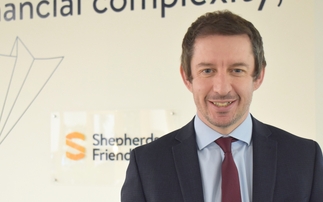Coronary heart disease (CHD) is the leading cause of death both in the UK and worldwide and is responsible for more than 73,000 deaths in the UK each year writes Fergus Bescoby.
In the UK, there are an estimated 2.3 million people living with CHD and around 2 million people affected by angina (the most common symptom of coronary heart disease).
CHD generally affects more men than women, although from the age of 50 the chances of developing the condition are similar for both sexes.
As well as angina (chest pain), the main symptoms of CHD are heart attacks and heart failure. CHD is sometimes referred to as ischaemic heart disease.
Coronary heart disease cannot be cured but treatment can help manage the symptoms and reduce the chances of developing complications such as heart attacks. Treatment can include lifestyle changes, such as regular exercise, an improved diet and stopping smoking, as well as medication and surgery.
In this article we take a closer look at some of the surgical procedures performed to correct CHD and various other forms of heart disease. The following main procedures will be covered:
Coronary angioplasty and stenting
CABG
Heart transplant
Heart valve surgery
Ablation
Cardioversion
Coronary angioplasty and stenting
Coronary angioplasty is also known as percutaneous coronary intervention (PCI), percutaneous transluminal coronary angioplasty (PTCA), or balloon angioplasty. Having a coronary angiogram will determine if this treatment is suitable.
Angioplasty may be a planned procedure for some people with stable angina but may be performed as an emergency treatment if the angina has become unstable, or if the person has suffered a heart attack.
During angioplasty, a small balloon is inserted to push the fatty tissue in the narrowed artery outwards. This allows the blood to flow more easily.
A metal stent (a wire mesh tube) is usually placed in the artery to hold it open. Drug-eluting stents can also be used which release drugs to stop the artery narrowing again.
Most people can go home the same day or the next day, but a longer stay is likely if an emergency angioplasty has been preformed.
Coronary artery bypass graft
Coronary artery bypass grafting (CABG) is also known as bypass surgery, heart bypass, or coronary artery bypass surgery. A coronary angiogram will determine if this treatment is suitable.
It is performed on patients where the arteries have become narrowed or blocked. Off-pump coronary artery bypass (OPCAB) is a type of coronary artery bypass surgery performed while the heart continues to pump blood by itself without the need for a heart-lung machine.
A blood vessel is inserted (grafted) between the aorta (the main artery leaving the heart) and a section of the coronary artery beyond the narrowed or blocked area. Sometimes one of the arteries that supplies blood to the chest wall is used and is diverted to one of the heart arteries. This allows the blood to bypass the narrowed sections of coronary arteries.
The number of grafts needed will depend on how severe the coronary heart disease is and how many of the coronary blood vessels are narrowed or blocked.
The procedure usually takes between three and six hours and will normally necessitate a seven day hospital stay to allow for recovery.
Recovery takes time and the speed of recovery differs slightly for each patient. Generally, the patient should be able to sit in a chair after one day, walk after three days and walk up and down stairs after five or six days.
Around 20,000 coronary artery bypass grafts are carried out in England every year. Most of these are carried out on men, and around 80% are used to treat people who are at least 60 years of age.
Heart transplant
In a small number of cases, when the heart is severely damaged and medicine is not effective, or when the heart becomes unable to adequately pump blood around the body (heart failure), a heart transplant may be needed.
A heart transplant involves replacing a heart that is damaged or is not working properly with a healthy donor heart. The procedure normally takes between four and six hours.
Unfortunately, suitable donor hearts do not become available for everyone and only eight out of 10 people have the heart transplant they require. In the UK, adults and children can wait over a year for a transplant.
The transplant won't be considered if the patient has not acted on the doctor's advice - to stop smoking, for example - or taken the prescribed medication. Also, in certain circumstances a heart transplant may not be suitable.
It is estimated that around one in 10 people will die due to complications in the first year after surgery. Most deaths occur in the first 30 days, but after this time the chances of survival improve dramatically.
Heart valve surgery
If one or more of the heart valves is diseased or damaged, it can affect how the blood flows through the heart in two ways:
If the valve does not open fully, it will obstruct the flow of blood. This is called valve stenosis or narrowing.
If the valve does not close properly, it will allow blood to leak backwards. This is called valve incompetence, regurgitation or a leaky valve.
Many people with heart valve disease need little or no treatment. However, it may be advised to have surgery on the faulty valve, which can greatly improve symptoms and quality of life.
There are two options for valve surgery: valve repair and valve replacement.
Valve repair is often used for mitral valves that become floppy and leak but are not seriously damaged.
Valve replacement is when the diseased valve is replaced with a new valve. The most common types of replacement valves are mechanical (artificial) valves or tissue (animal) valves.
In some cases, a transcatheter aortic valve implantation (TAVI) procedure may be used in adults who are not well enough to have traditional heart surgery.
Ablation
Ablation, also known as catheter ablation, is a treatment that aims to control or correct certain types of abnormally fast heart rhythms.
A catheter ablation involves passing thin, flexible tubes called catheters through the blood vessels to the heart. The catheters record the heart's electrical activity and can pinpoint where the arrhythmia is coming from.
The area of heart muscle at the affected site is then destroyed using either heat (radiofrequency ablation) or by freezing (cryoablation).
This creates scar tissue, which doesn't conduct electricity and so knocks out a trouble spot or acts as a fence around the problem area to prevent the electrical signals from reaching the rest of the heart and causing the arrhythmia.
Catheter ablation is successful in around 90 per cent of all cases.
Cardioversion
Cardioversion is a procedure that doctors use to restore a fast or irregular heartbeat (arrhythmia) to a normal rhythm. Arrhythmias can prevent the heart from pumping enough blood to the body. They can also increase the risk of stroke, heart attack and sudden cardiac arrest.
During an arrhythmia, the heart can beat too fast, too slow or with an irregular rhythm. Cardioversion is done in two ways: using an electrical procedure or using medicines.
For the electrical procedure, the heart is given low-energy shocks to trigger a normal rhythm. The patient is temporarily put to sleep before the shocks are given. This type of cardioversion is done in a hospital as an outpatient procedure, so the patient can normally go home after the procedure is finished.
Using medicines to correct arrhythmias is also a form of cardioversion. This type of cardioversion is usually done in a hospital, but it also can be done at home or in a doctor's surgery.
Cardioversion isn't the same as defibrillation, although they both involve shocking the heart. Defibrillation gives high-energy shocks to the heart to treat very irregular and severe arrhythmias. It is used to restore normal heartbeats during life-threatening events, such as sudden cardiac arrest.
Underwriting considerations
The underwriter will need to be in possession of all available specialist reports pertaining to the client's medical history. This could include ECG tracings, echocardiograms and coronary angiogram reports.
Details of treatment (pharmaceutical and surgical) will need to be obtained, along with other risk factors, for example hypertension, smoker status and lipid levels. Dates of last symptoms will also be taken into account in the assessment process.
Fergus Bescoby is underwriting development manager at VitalityLife
Reference
Hannover Life Re
NHS Choices
British Heart Foundation
National Institute of Health











